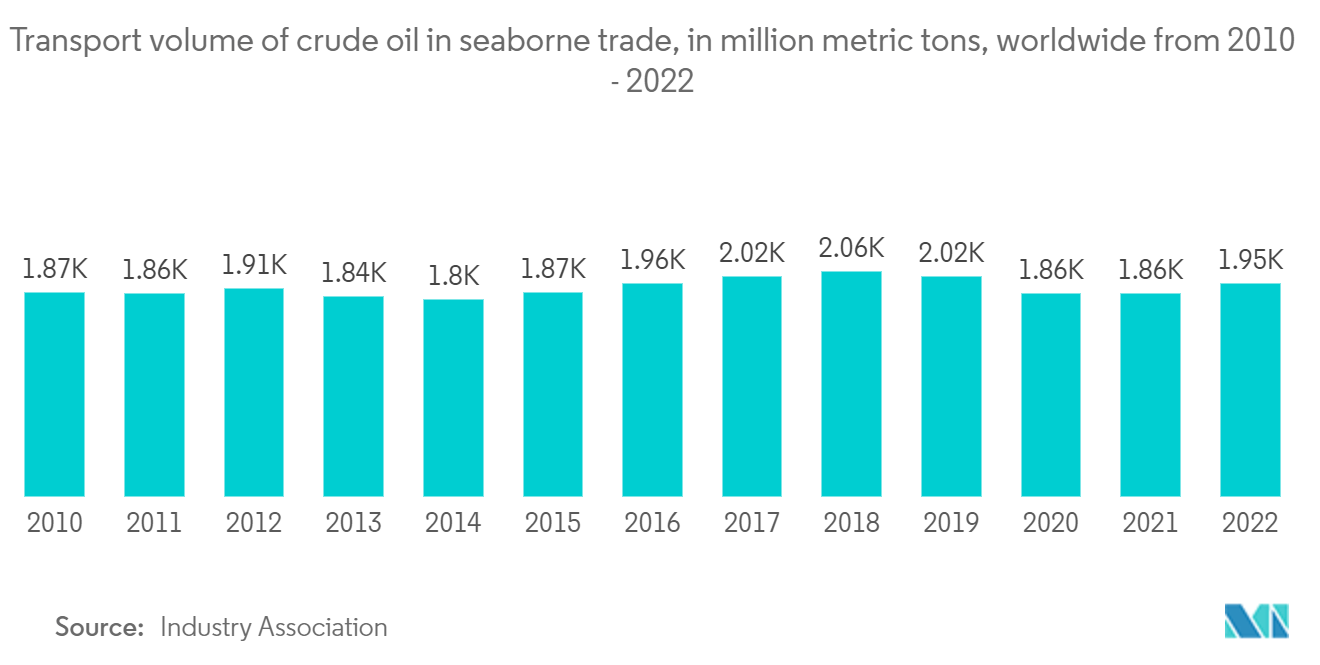Market Trends of Energy Logistics Industry
The Oil & Gas Segment is booming
The oil & gas segment is a significant component of the energy logistics market, as oil and gas remain crucial sources of energy globally. This segment involves the transportation, storage, and distribution of crude oil, refined petroleum products, and natural gas.
According to the International Energy Agency (IEA), from 2022 to 2028, the oil demand is projected to grow by 6% to 105.7 Mmb/d, driven by strong demand from the petrochemical and aviation industries. However, this cumulated increase implies that annual demand growth will slow from around 2.4 Mb/d in 2023 to around 0.4 Mb/d in 2028, indicating that the peak demand is just around the corner.
Non-OPEC+ oil-producing countries have plans to increase global supply capacity over the medium term, projected to increase by 5.1 million barrels per day (mb/d) by 2028, led by the United States, Brazil, and the Republic of Guyana. Plans to build capacity within OPEC+ are led by Saudi Arabia, the United Arab Emirates, and Iraq, with African and Asian members expected to continue declining and Russian production declining due to sanctions. This implies a net capacity increase of 0.8 million Mb/d among the 23 members of OPEC+ over the forecast period.
The oil & gas segment of energy logistics is influenced by various factors. Market demand, geopolitical factors, and regulatory frameworks play a significant role in shaping the industry. Fluctuations in oil prices, changes in global energy policies, and geopolitical tensions can impact the transportation and distribution of oil and gas resources.

Increasing Global Demand for Energy
- The global electricity demand is projected to reach 660 quadrillion BTUs in 2050, an increase of 18% compared to 2023, driven by population growth and rising prosperity. The demand for residential and commercial primary energy is projected to decline by around 15% by 2050 as improvements in energy efficiency reduce the need for energy from a rising population.
- The largest and fastest-growing energy sector is electricity generation, driven by increasing access to reliable energy in developing countries. The growth of electrification is partly offset by improved energy efficiency in developed countries.
- The construction of new buildings and infrastructure and the production of products that meet human needs support the growth in the industrial sector.
- The demand for commercial transportation is growing as economies expand and the need to transport goods increases. However, the increase in personal mobility is offset by efficiency improvements and an increase in the number of electric vehicles.
- The share of global energy consumption continues to grow proportionally to the population and economic growth in developing economies, reaching approximately 70% in 2050.
- More than 100% of global energy demand growth is driven by developing countries. Energy efficiency improvements are outpacing economic growth in developed economies, helping to offset energy demand growth that has traditionally been associated with economic growth. The combined percentage of energy consumed in the United States and Europe in 2023 is expected to drop from 35% to around 20% by 2050.


